Ireland’s plants and vegetables are an interesting part of its history and culture. Types of Irish veggies Geographically separated from both mainland Europe, as well as the rest of the British Isles, Ireland developed its customs for food and vegetable growing over many centuries.
Many of those techniques and land that they used would be the source of great crop-growing for both Ireland and countries beyond its shores.
Ireland was widely considered to be a major bread-basket for the British Empire, especially early on, where many of its crops were exported across British-controlled territories, for better and for worse.
With this reputation came a whole range of vegetables that were grown here. This list will show just a small selection of the many items grown in these Beautiful islands.
1. Brussel Sprouts

A mainstay of many Christmas meals around the world, the brussels sprout has also become a popular vegetable that is consumed across the country.
Although they were originally recorded and cultivated around the Brussels region of Belgium, hence the name, they quickly grew to become a popular mainstay of many diets around Europe, thanks to the cool temperatures which they grow best in being common in Western and Northern parts of the continent.
After the 18th century, when the brussels sprout was first documented, it quickly found itself amongst the many crops that Ireland grew.
Brussel sprouts are often eaten raw in salads and sandwiches. They may also be steamed, boiled, roasted, sautéed, stir-fried, or deep-fried.
Brussels sprouts contain vitamin K, folate, and fiber. Vitamin K helps prevent bone fractures, and folate supports cell growth. Fiber lowers cholesterol levels.
Brussels sprouts are a rich source of antioxidants. The phytonutrients in brussels sprouts are called glucosinolates.
These compounds can protect against cancer, diabetes, and heart disease. It’s believed that eating brussels sprouts daily can help improve digestion.
2. Zucchini/Eggplant
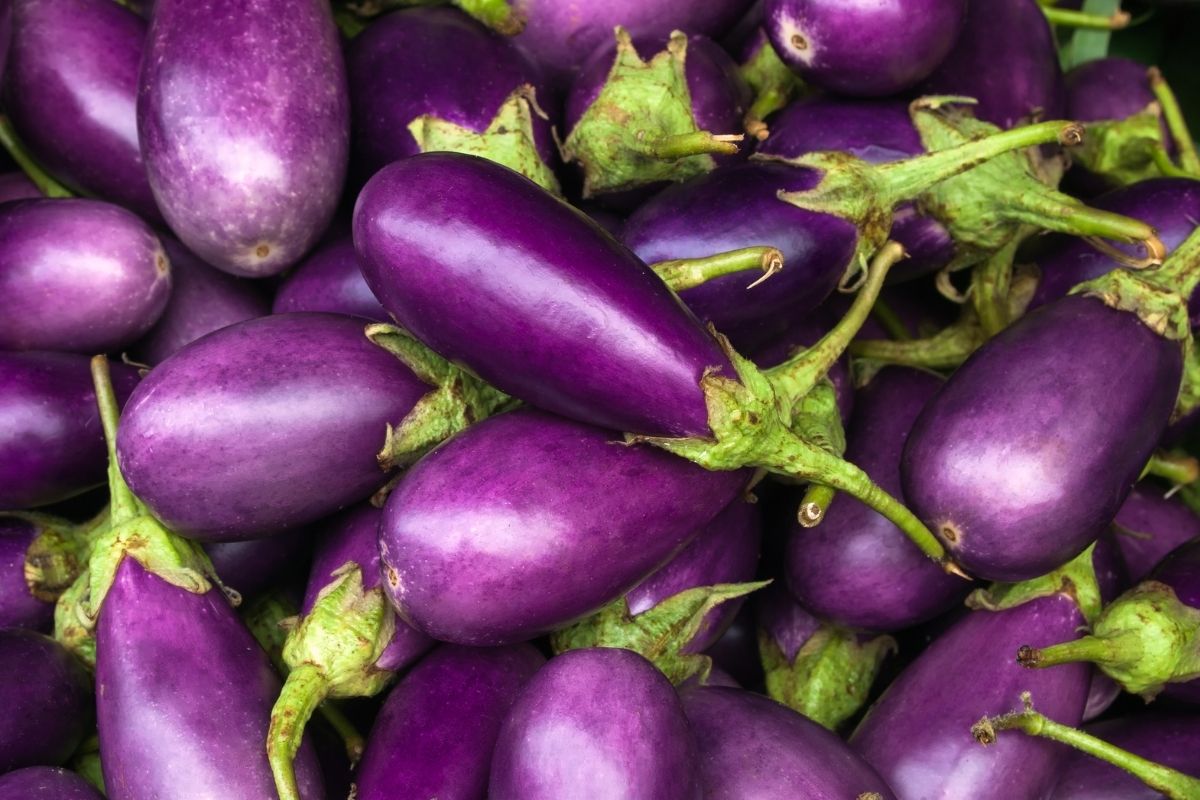
Also known as the aubergine in the UK and Ireland, the Eggplant is an interesting case where it has established itself as a popular vegetable, despite it being relatively rare to find outside across the country.
These vegetables naturally come from Africa and Asia, so are normally grown in much warmer temperatures than those that you find in Northern Ireland.
Being a tropical vegetable because of this, it is next to impossible to grow this vegetable outside of Ireland.
Most domestic growth of this plant is done in greenhouses, where eggplants can receive the amount of heat and moisture that they need to thrive.
Whilst the aubergine was popular across Southern Europe and the Middle East for thousands of years, there was no documented existence of these plants in the British Isles until at least the 16th century.
But that hasn’t stopped them from becoming a delicacy across both Ireland and the UK!
3. Cabbage
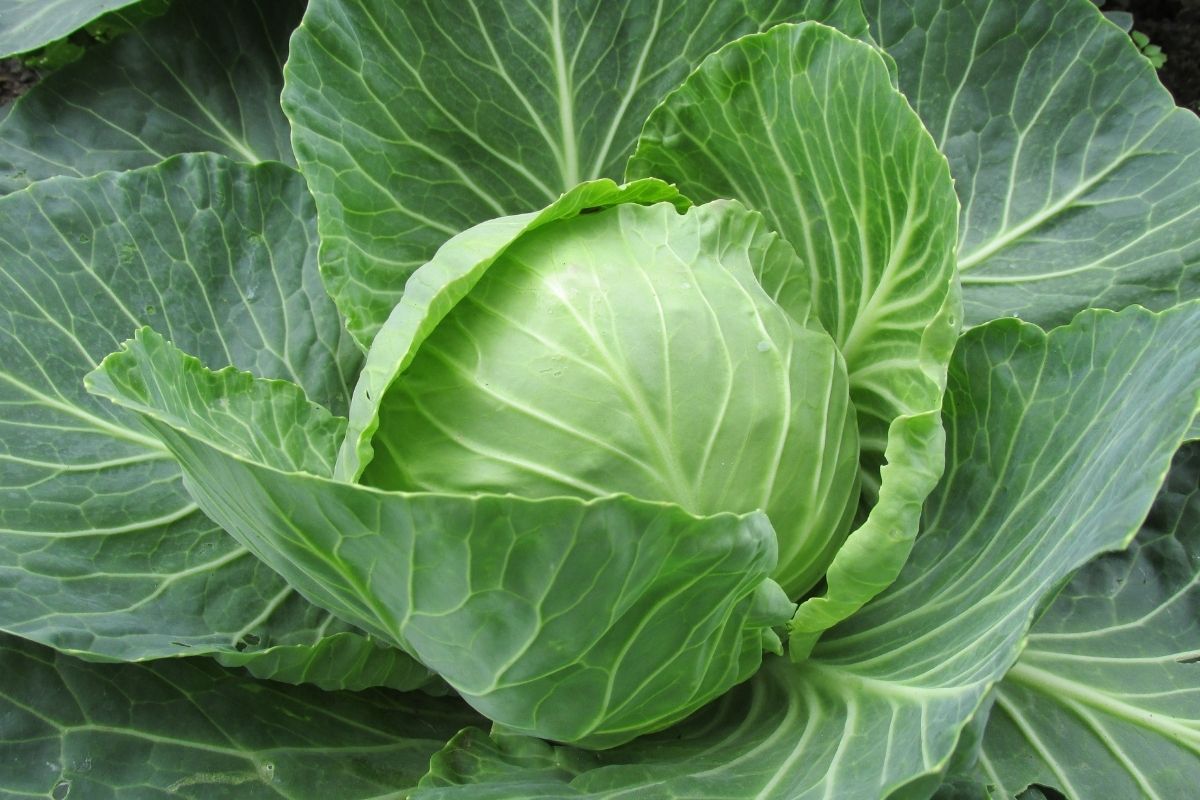
Unlike many of the other vegetables we have talked about in this list, cabbages are a vegetable that can be considered a native of the Emerald Island.
Whilst the vegetable is thought to have originally grown somewhere in the Middle East, they have existed and been grown for so long in Ireland that the country is home to its special varieties of this vegetable.
Cabbage plants grow well in temperate climates, which makes them perfect crops to be grown in the country all year round.
The leaves of cabbage plants are used in many foods, such as soups, salads, stews, sauerkraut, kimchi, and pickles.
To ensure that your cabbage is safe to eat, wash it thoroughly before cooking. Remove any wilted parts, damaged leaves, or signs of insect infestation, and store cabbage in the refrigerator crisper drawer.
4. Onions
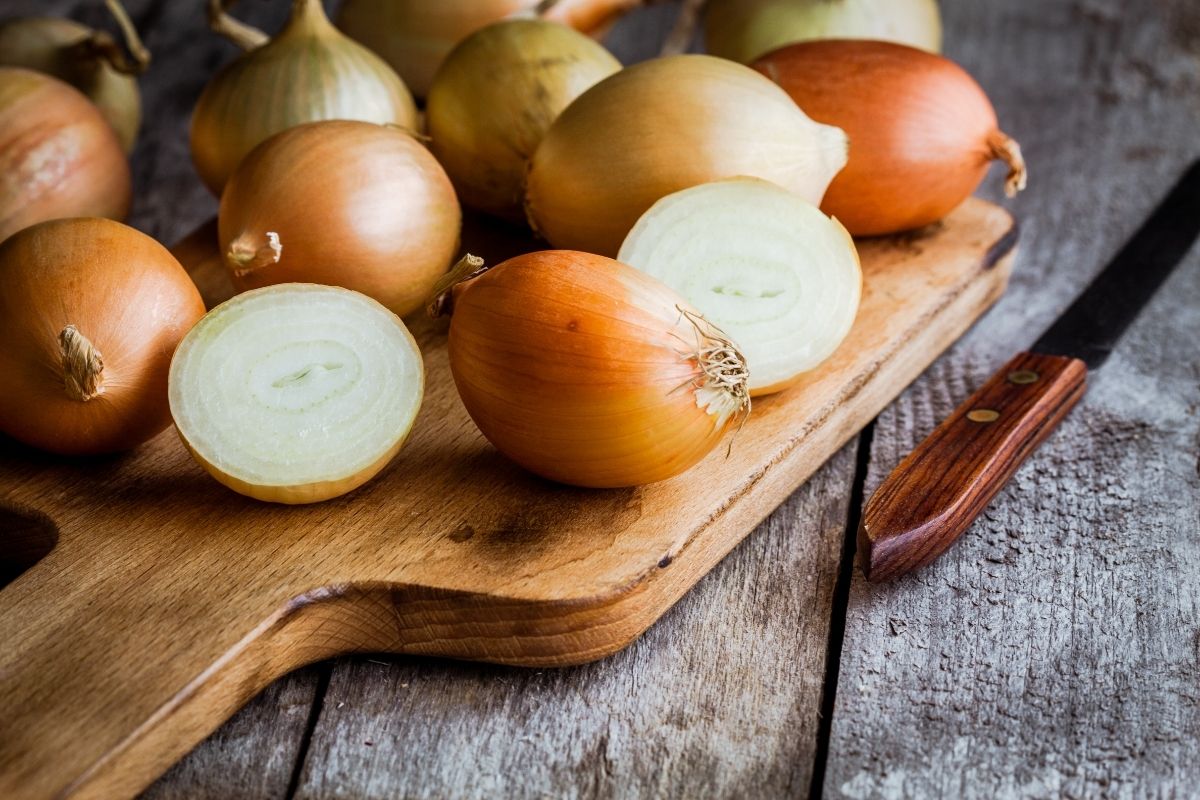
Yet another plant that has been grown in Ireland for hundreds, if not thousands of years.
The Onion was first recorded as being grown in Europe some 7 thousand years ago, so it had plenty of time to spread to pretty much every corner of the continent, as well as making headway in Asia and Africa before maritime trade brought it to the rest of the world.
Alongside cabbages, onions were one of the staple crops of Ireland and the British Isles for hundreds of years before their positions as a top crop were usurped in the country by the potato.
Still, that doesn’t mean that these aren’t still widely grown across the country today!
As we have established, onion plants grow well in Ireland.
They are known to withstand cold weather and poor soil conditions. Onion plants require full sunlight during the daytime and partial shade at night.
Onion bulbs can also be stored for several weeks in winter without any harm, which was one of the reasons they were so popular to many farmers for thousands of years.
5. Potato

Arguably the vegetable that Ireland is most associated with, much to the chagrin of many native Irish people, and being the butt of a thousand jokes and terrible impressions.
Still, it’s hard to deny how synonymous this single vegetable is. When you think of one of these items, the chances are that the other is not far behind.
So it can come as a surprise to find that potatoes are not native to Ireland at all. In fact, in the grand scheme of things, they are a very recent addition to Irish crops!
Potatoes were brought back to Europe from South America during the European age of discovery in the late 16th century by the famed explorer Sir Walter Raleigh, and the potato was introduced to Ireland around the same time.
Potatoes took a while to be accepted as an edible crop in many European countries, and are related to the poisonous nightshade plant.
In Ireland, however, they were accepted and grown out of necessity, as it allowed poorer Irish farmers to compete with more wealthy English landowners who had taken up large swaths of land to fuel their empire-building ambitions.
Still, that doesn’t mean that potatoes haven’t become a must-have staple food of the country today. They are used in everything from bread and chips to soups and salads.
Potatoes in modern Ireland are a popular part of Irish cuisine.
6. Garlic
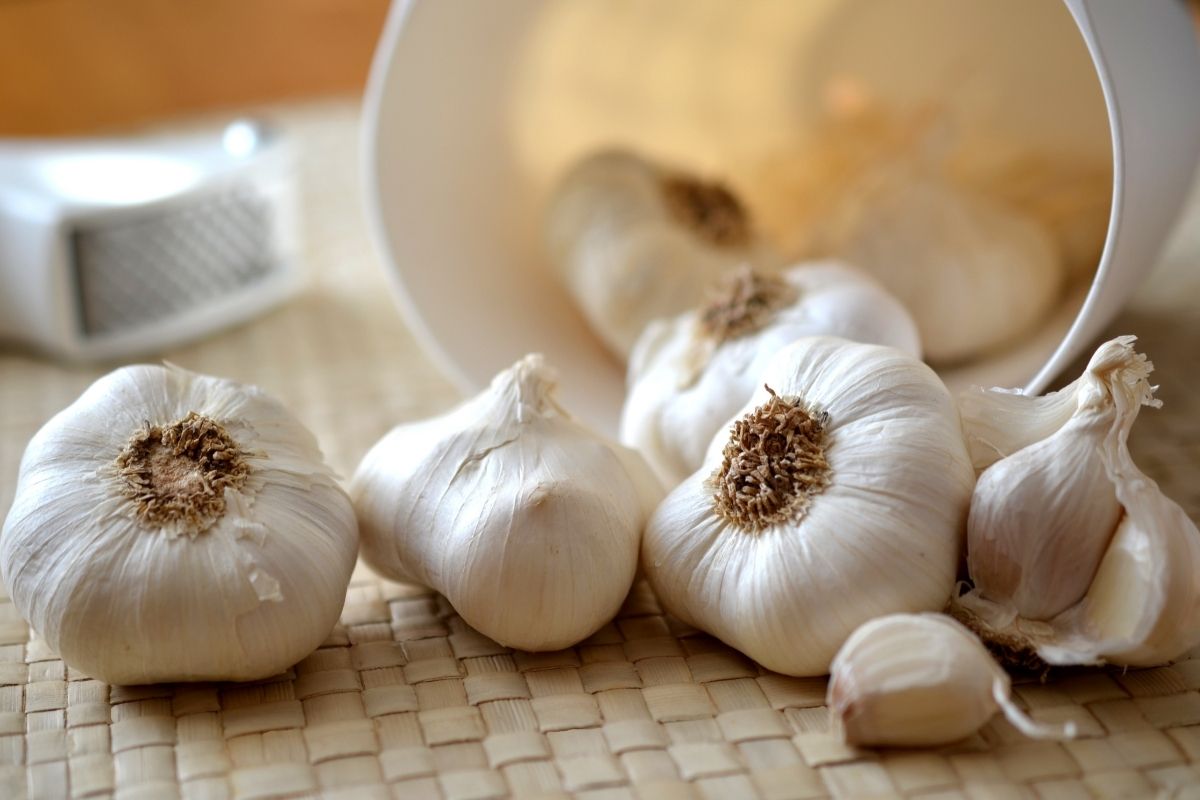
Garlic is yet another plant that has been an Irish staple crop for thousands of years.
In the same vein as cabbages and onions, garlic plants have been grown in Ireland and across wider Europe for thousands of years.
There is evidence of wild garlic being grown and cultivated as far back as 10 thousand years ago, just at the end of the last Ice Age!
Early farmers across Europe and Ireland likely recognized the benefits of growing these small bulbs.
Being able to grow year-round and relatively quickly, as well as being quite small, means that you can grow a relatively large amount of them over a small period.
A vital trait if you’re hoping to support small agricultural communities that are just getting to grips with the first steps of agriculture!
Irish people have also used garlic to treat many illnesses over the centuries, including colds, flu, and even stomach aches.
The medicinal properties of garlic are well known, and garlic grown in Ireland is rich in nutrients and vitamins, making them ideal for treating light ailments.
7. Corn
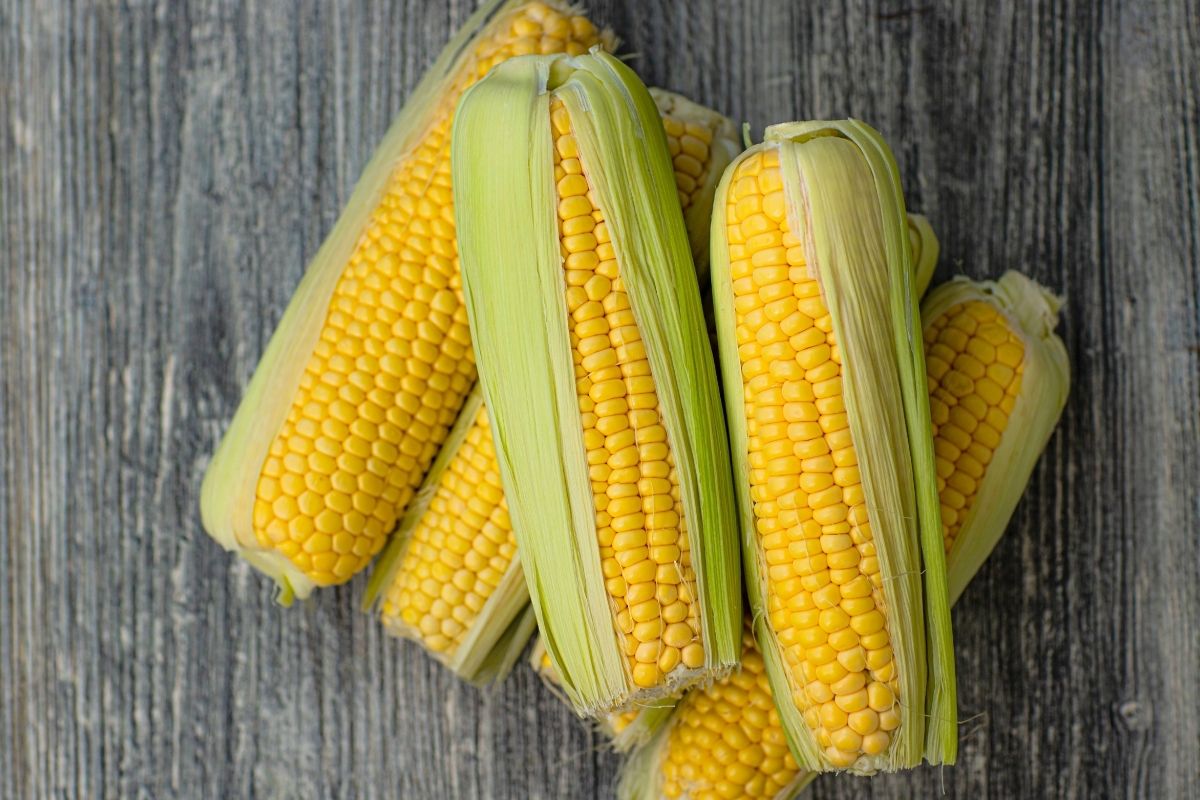
Corn is another crop that was introduced to Ireland from overseas. Corn had been grown in Central America, especially Mexico, for thousands of years before it was brought back to Europe by colonizers.
Corn, or Maize as it is also known, is one of many crops that were grown in Ireland after the widespread introduction of the crop across Europe.
Corn plants are easy to grow. They require little care and can thrive indoors. Corn plants are available in both single and double varieties.
Double corn plants have larger ears than single corn plants.
People use corn plants for various purposes. They eat the grain, make flour for bread, and use the stalks for animal bedding.
Corn plants are also used to make ethanol. Ethanol is made from corn plants through fermentation. It is then distilled into gasoline or diesel.
8. Pumpkin

Pumpkins share a very similar history to the corn plant with Ireland.
Originally also cultivated in Central America, this was yet another plant that was brought back to Europe and grown in vast quantities.
It became very popular in Britain and Northern Ireland, where it became a crop that was very popular to harvest around fall.
It is also in Ireland and the British Isles where the tradition of pumpkin-carving for Halloween got its first start, joining similar vegetables such as turnips and swedes in being turned into lanterns during this old festival.
Watering your pumpkin plant regularly helps ensure its health and growth. Make sure to water your plant thoroughly, allowing the roots to soak up moisture.
Make sure to remove weeds and debris from around the base of your pumpkin plant so that your plant has access to plenty of fresh air and sunlight.
9. Cucumber

Cucumbers are another plant that was introduced to Ireland several hundred years ago. Unlike corn and pumpkins, however, cucumbers were originally cultivated and grown in South Asia.
They have been grown in Europe for thousands of years, likely due to the Greek or Roman trade routes with India.
England had been growing cucumbers since at least the 14th century, so it was likely around the same time that Ireland also began to grow these long vegetables.
Cucumbers are one of the most popular vegetables grown by amateur gardeners in Ireland today. They are available all year round, but the best season for growing them is between May and June.
They grow well in cool weather and produce more fruit when there is plenty of sunlight.
10. Rosemary
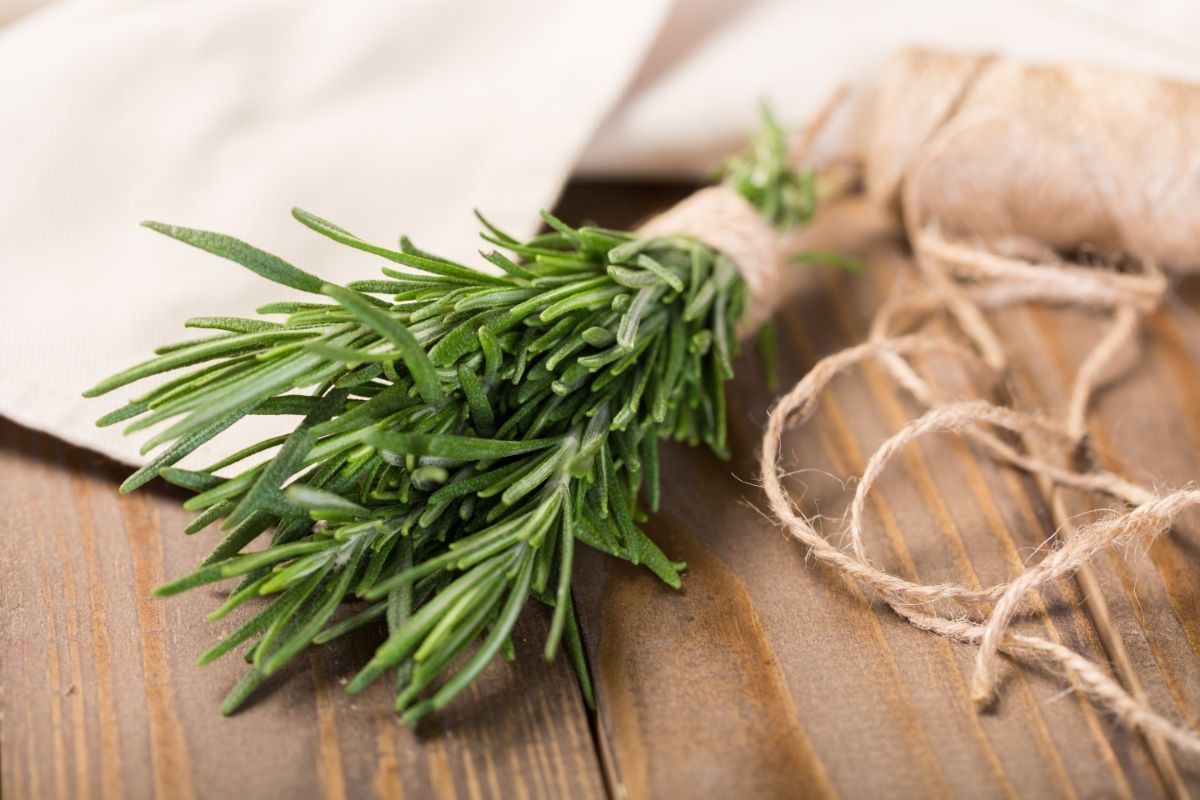
Whilst technically not a true vegetable in the same way most of the other plants on this list are, rosemary is still a popular plant that is grown and consumed in Ireland.
This shrub originates in Southern France and Spain, and it spread throughout Europe via trade routes.
Although it likely existed around Ireland before the 8th century CE, it was certainly encouraged to grow around monasteries and other holy sites in the centuries afterward.
This edible herb is often referred to as “the poor man’s mint” because it is inexpensive and easy to grow.
The leaves are harvested throughout the winter and spring months before they begin to flower. Rosemary can be added to soups, pasta dishes, salads, and roasted meats.
According to Irish folklore, rosemary is said to be particularly helpful for those seeking love. Rosemary is thought to bring good fortune if you add three sprigs to your bathwater each morning.
Conclusion
As you can see, whilst Ireland doesn’t have many vegetables that would be considered ‘native’ to it, it is the perfect place to grow so many different foods from around the world.
The climate is ideal for growing a variety of crops, while the land itself provides great soil conditions for planting and growing your food.
Ireland is truly an amazing country with so much history to discover within its borders. We hope that we’ve helped show you that with this list!







